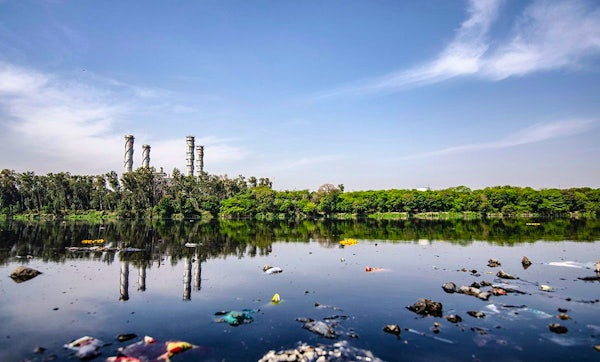How the Beauty Industry Is Harming Our Seas and Oceans

While there are many businesses threatening our environment, one of the most surprising is the beauty industry. Products from our shampoo to our mascara leave lasting impacts on the Earth, from the destruction of coral reefs to the buildup of microplastics. The personal care industry, worth over $500 billion, relies heavily on harmful packaging and ingredients that often find their way into delicate environments such as our seas and oceans.
How is the beauty industry related to sea pollution?
Perhaps one of the biggest ways that the beauty industry harms the environment is through single-use plastic packaging. These containers are often not recycled and find their way into landfills or waterways. As more and more of these plastics make their way into the oceans, harmful waste products will continue to build up. The Great Pacific Garbage Patch is one of the most startling examples of this buildup -- the Patch measures 1.6 million km2 and contains 1.8 trillion pieces of plastic. As beauty packaging continues to be discarded, trash buildups like these will continue to form.
However, many beauty companies such as Lush Cosmetics and Kevin Murphy, are taking radical steps to reduce the impact of their packaging. Lush, for instance, formulates shampoos and other bath products in a solid form so no plastic packaging is required. Kevin Murphy, a hair care company, has decided to make their packaging out of plastic waste found in the ocean. As companies collectively begin to cut down on their use of plastics, the beauty industry will slowly become more sustainable.
Negative environmental impacts of the beauty industry
Transportation of beauty products is also harmful for the environment. Many cosmetic products are made in foreign countries and when they are transported to overseas markets, a large carbon footprint is formed. In 2019 alone, the aviation industry produced 915 million tons of carbon dioxide -- that’s nearly 2 percent of all human-produced CO2 emissions per year. These carbon emissions speed up the processes of global warming which leads to many other environmental problems. In an effort to combat this process, consumers are encouraged to purchase their cosmetics from local companies to even making their own cosmetics.

Are beauty products free of microplastics?
The beauty industry has another harmful secret-- microplastics. Microplastics, according to the National Oceanic and Atmospheric Administration (NOAA), are “small plastic pieces less than 5 millimeters long which can be harmful to our oceans and aquatic life.” These plastics were popularized by the industry in exfoliating skincare products. However, as these small plastic beads wash down your sink or shower drain, they are entering fragile aquatic ecosystems. These beads are often consumed by marine life and as the plastics build up in their digestive tract, it becomes detrimental to their health.
In a harmful cycle where marine life ingest these microplastics and consumers eat the affected marine life, microplastics, as a result, find their way into our digestive tracts as well. This cycle causes a host of problems in the human body, most notably liver damage. Despite many countries banning microplastics in cosmetics, they are still a significant problem. To reduce your impact, you can choose to purchase products free of microplastics. Beat the Microbead offers a searchable database of cosmetic products free of these plastics.
How does sunscreen harm aquatic environments?
The type of sunscreen you use can also have an impact on aquatic environments. Many sunscreens contain harmful chemicals such as Oxybenzon, which can be incredibly detrimental to fragile aquatic ecosystems such as coral reefs. According to NOAA, these chemicals often enter waterways through swimmers or through runoff pollution. Once they enter aquatic environments, these chemicals impair photosynthesis in algae, decrease fertility in fish, and destroy coral reefs. By checking the label of your sunscreen, and only using environmentally friendly products, you can combat these harmful processes.
What are other harmful impacts of the beauty industry?
Alongside these harmful environmental effects, the cosmetic industry is also notorious for testing products on animals. In a shocking statistic, 80% of the world allows cosmetics to be tested on animals. These tests oftentimes result in harmful allergic reactions that cause considerable pain and suffering for the animals. To support cosmetic companies that do not test on animals and are cruelty-free, products are labeled with the easily identifiable Leaping Bunny certification.
Along with checking your beauty products for the Leaping Bunny certification, it’s good practice to start reading the ingredient labels. It’s important to avoid products that contain ingredients like parabens, toluene, and triclosan, as they can be harmful to your health. By carefully examining labels, you can purchase cosmetic products that aren’t tested on animals and are also safe for you.
As the beauty industry continues to evolve, consumers should push for more environmental and sustainable practices. The next time you buy sunscreen, deodorant, or shampoo, think about the impact that product will leave on the environment and whether you need to consider more sustainable alternatives.
For more information about choosing an environmentally friendly sunscreen, read our post here.